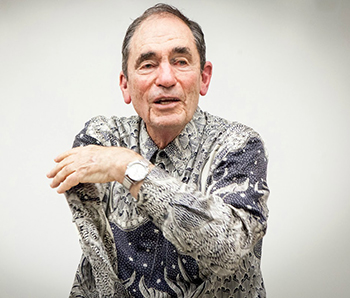
Judge Albie Sachs |
Human rights activist and former Constitutional Court Judge, Albie Sachs, will deliver a public lecture on the Bloemfontein Campus. The topic of his discussion will be ‘Sites of memory, sites of conscience’. This lecture will form part of a series that focuses on how the creative arts represent trauma and memory – and how these representations may ultimately pave the way to healing historical wounds.
The details of the event are:
Date: Thursday 26 March 2015
Time: 12:30
Venue: Albert Wessels Auditorium, Bloemfontein Campus
RSVP: Jo-Anne Naidoo at Naidooja@ufs.ac.za
A South African Sign Language interpreter will be present at the event.
Joining Judge Sachs on stage as respondent will be Dr Buhle Zuma, a young scholar and lecturer at the University of Cape Town's Psychology Department.
Expressing experiences of trauma
Judge Sachs is no stranger to the use of the arts as a way of expressing the inarticulable and overwhelming experiences of trauma. Targeted as an anti-apartheid freedom fighter, he lost his right arm and was blinded in one eye in a car bomb attack in 1988. As a judge of the Constitutional Court, he spearheaded conversations about the role of the arts in our constitutional democracy. This has led to the installation of some of the best artworks by South African artists at the Constitutional Court.
Vice-Chancellor’s Lecture Series on Trauma, Memory, and Representations of the Past
This lecture will launch of the Vice Chancellor’s Lecture Series on Trauma, Memory and Representations of the Past. It forms part of a five-year research project led by Prof Pumla Gobodo-Madikizela, funded by the Mellon Foundation. The event is hosted by the UFS Trauma, Forgiveness and Reconciliation Studies.
“One of the most remarkable aspects of trauma,” Prof Gobodo-Madikizela says, “is the loss of language, a moment of rupture that produces what some scholars have referred to as ‘speechless terror’. The arts, in all its forms – literary, performance, and visual – are a viable mechanism through which the unspeakable, traumatic past may be represented.”
These artistic forms of representing trauma are at the heart of this Vice-Chancellor’s Lecture Series. “We are interested not only in how experiences that transcend language are represented through the arts,” Prof Gobodo-Madikizela explains, “but also in probing the limits of trauma theory, and how the creative arts might be employed to bear witness in a way that may open up the possibility of healing.”
Dr Buhle Zuma
Former Mandela Rhodes scholar and one of the 2011 Mail & Guardian’s 200 Young South Africans, Dr Zuma is particularly interested in issues at the heart of our rainbow nation. His current research revolves around the question of freedom: what it means to be human for black people after centuries of dehumanisation, and the role of desire and fantasy in the political imagination of post-apartheid South Africa.